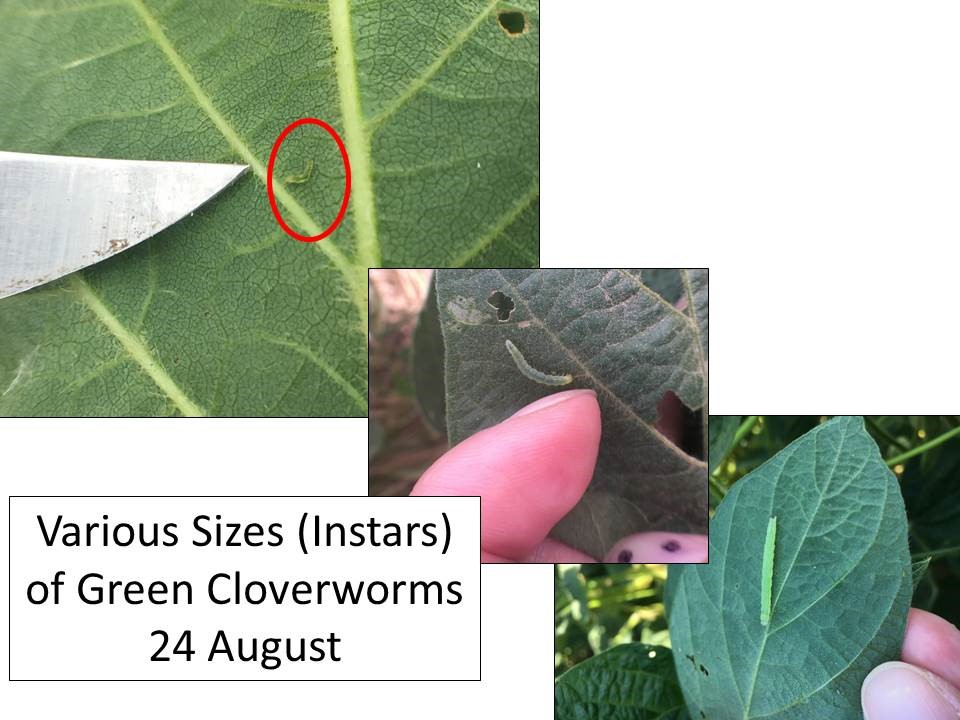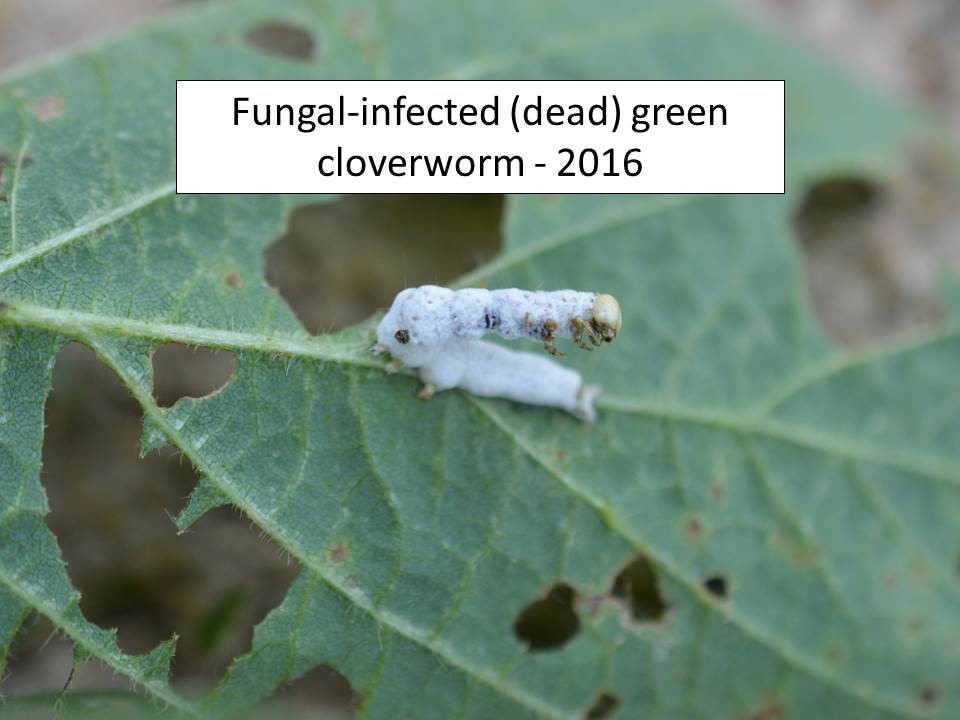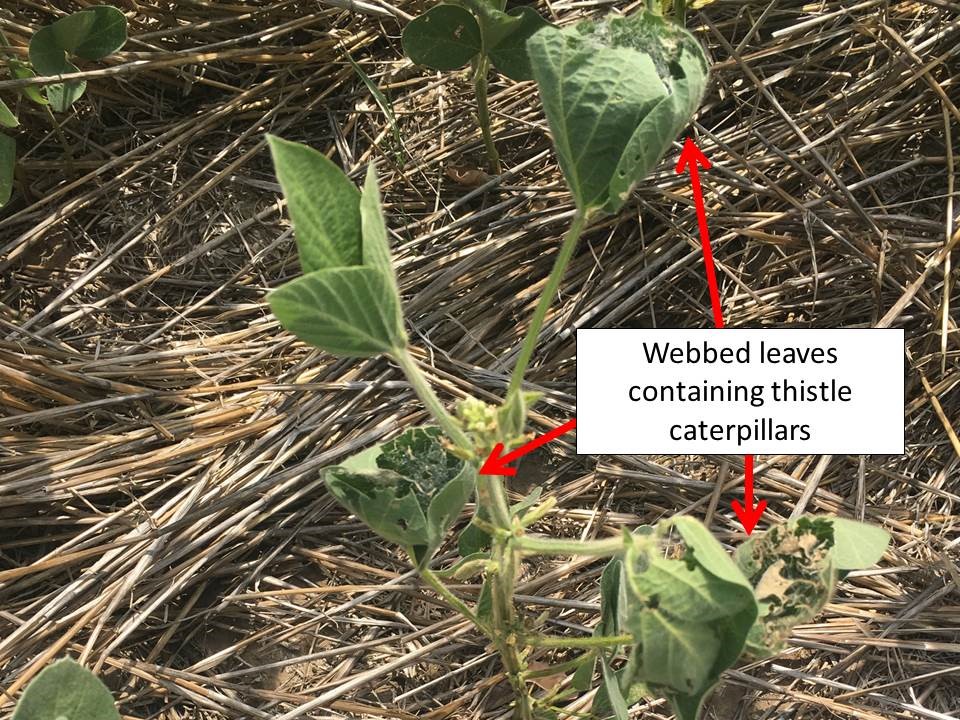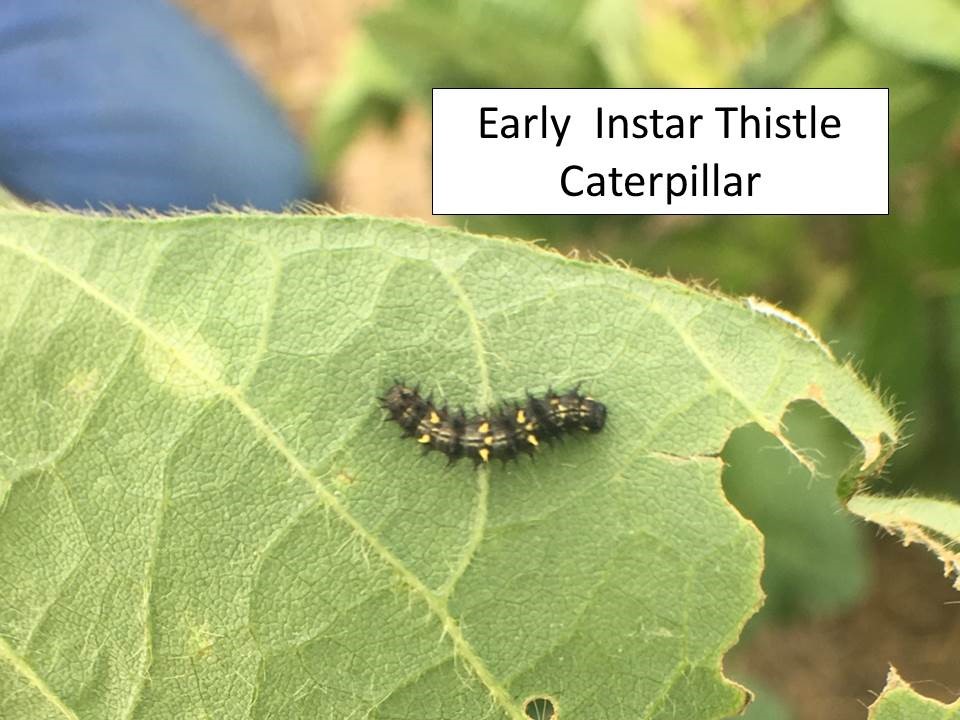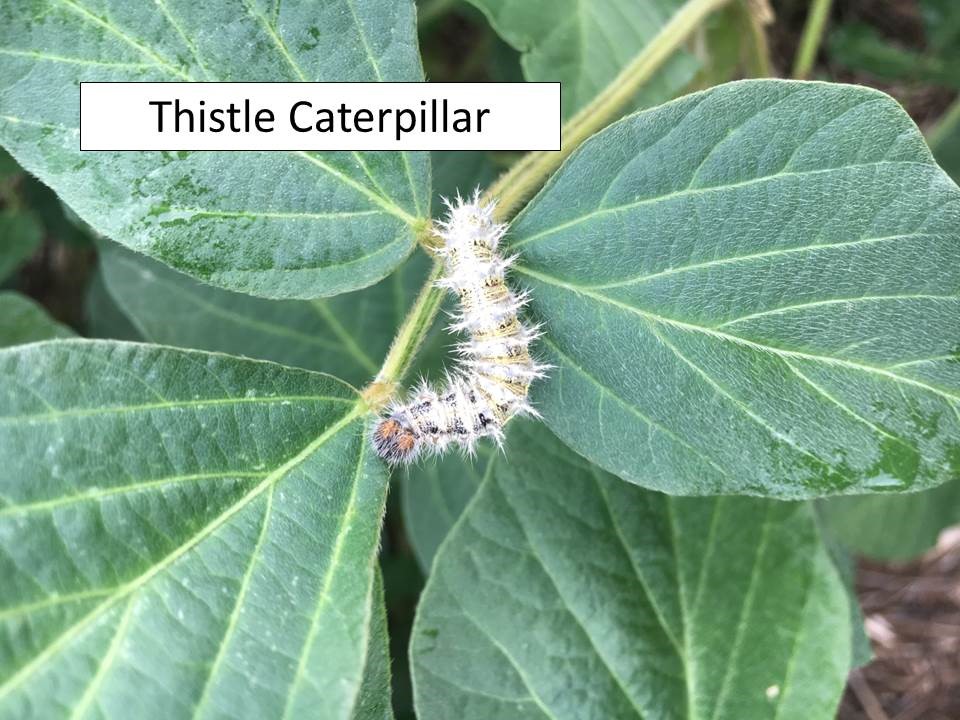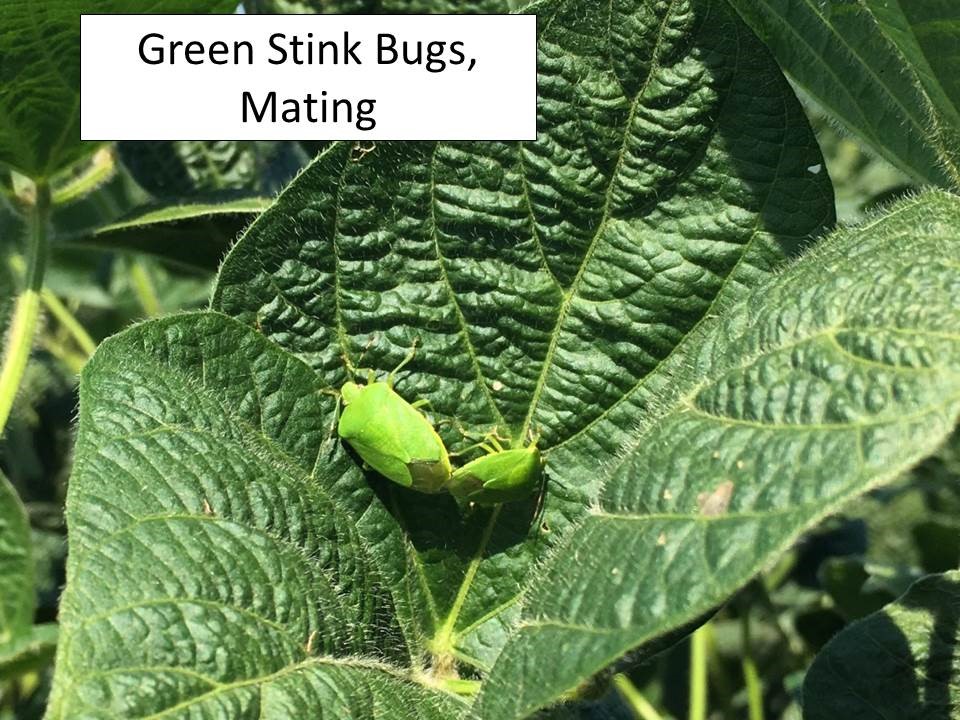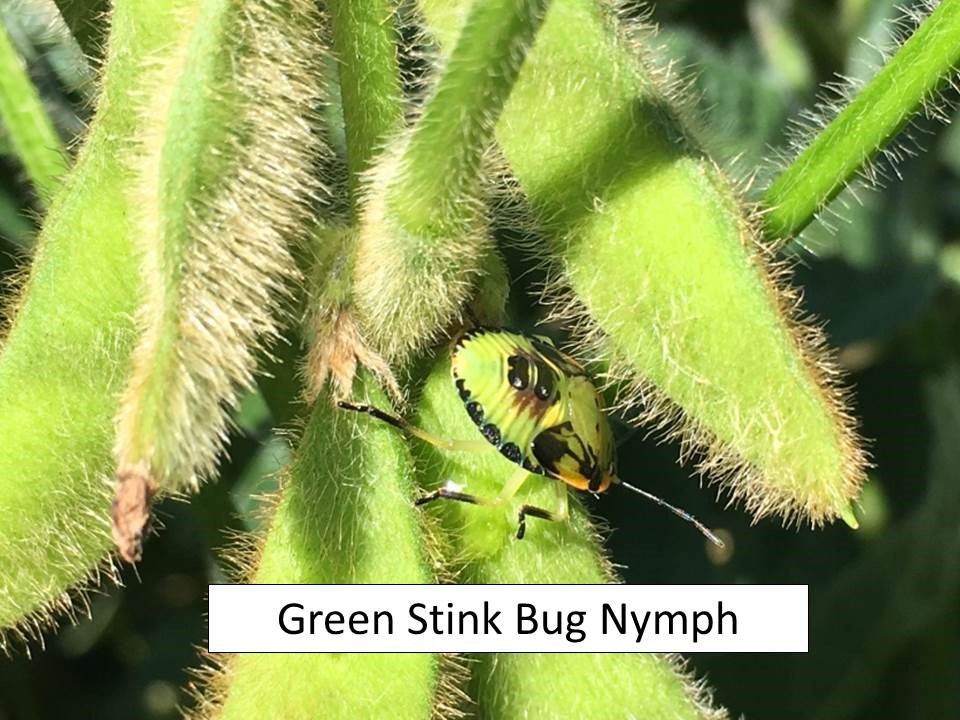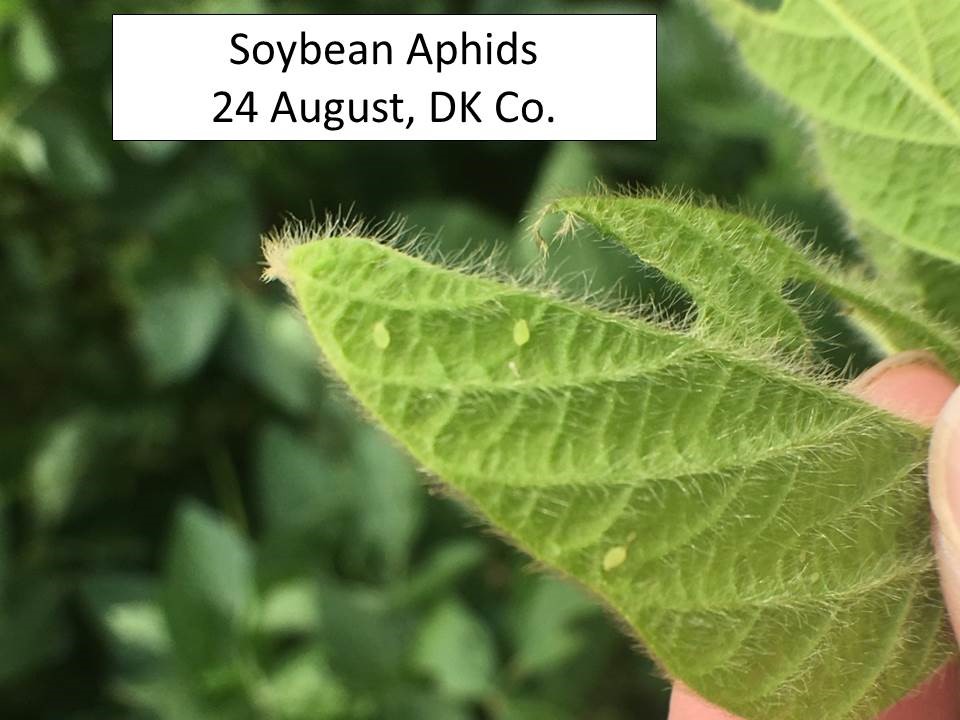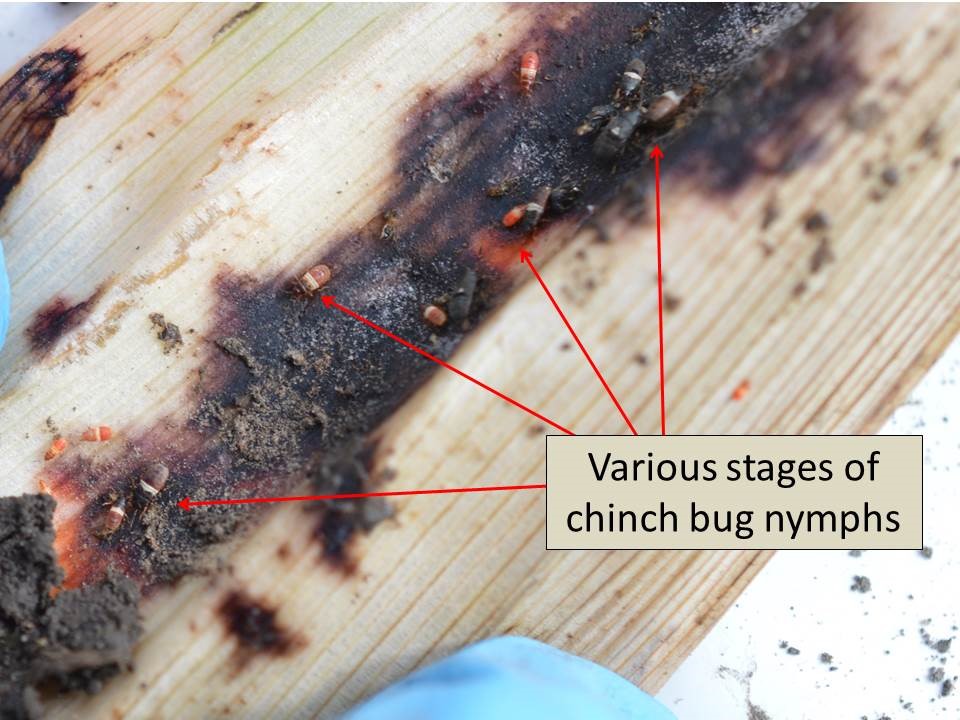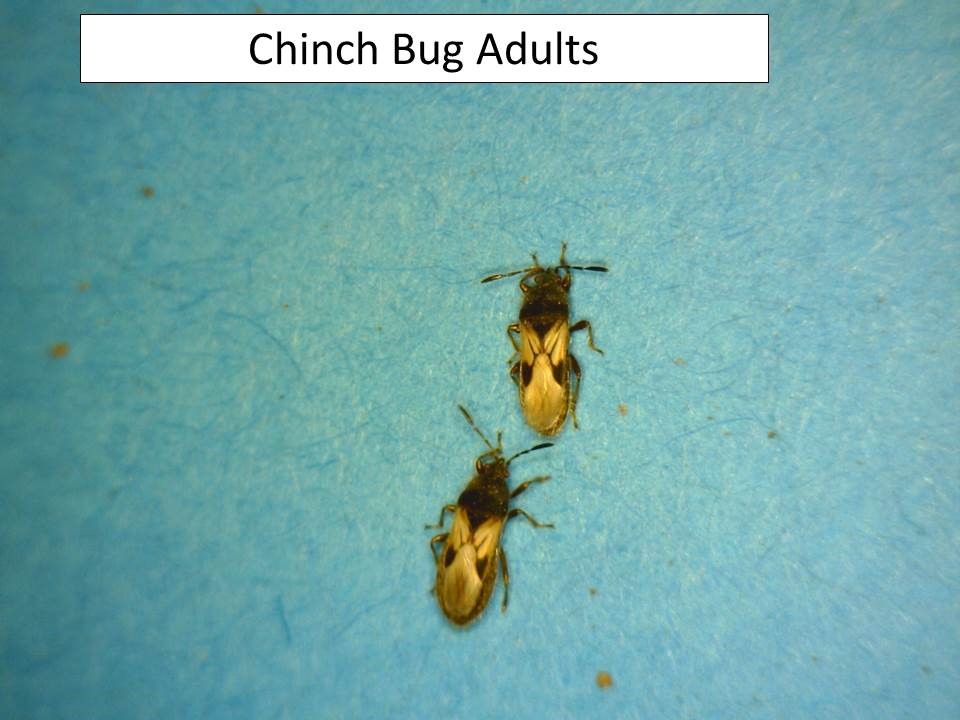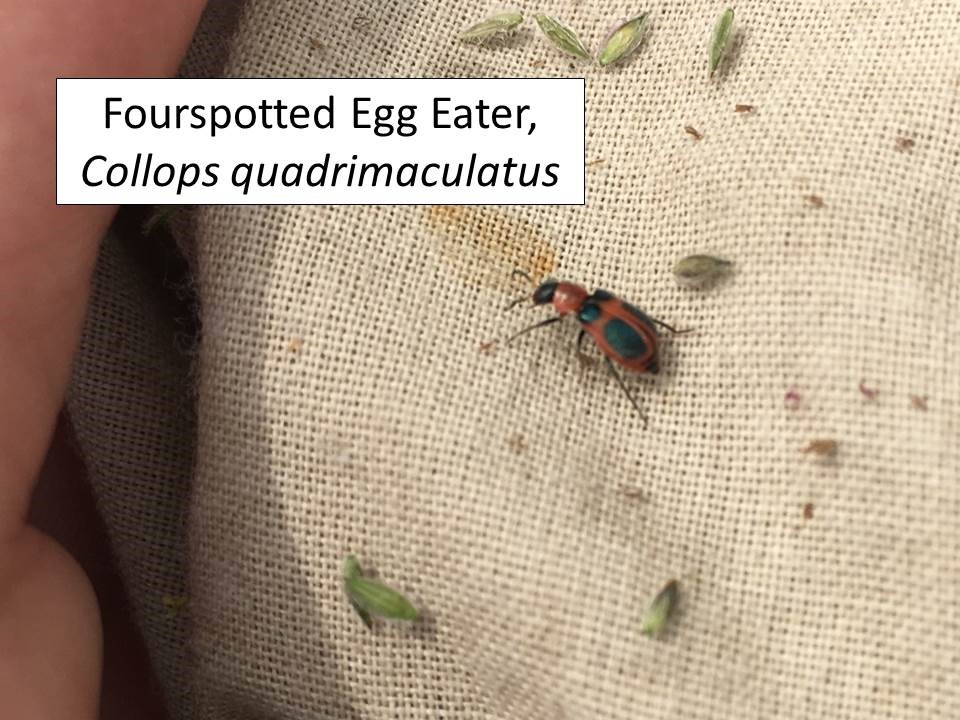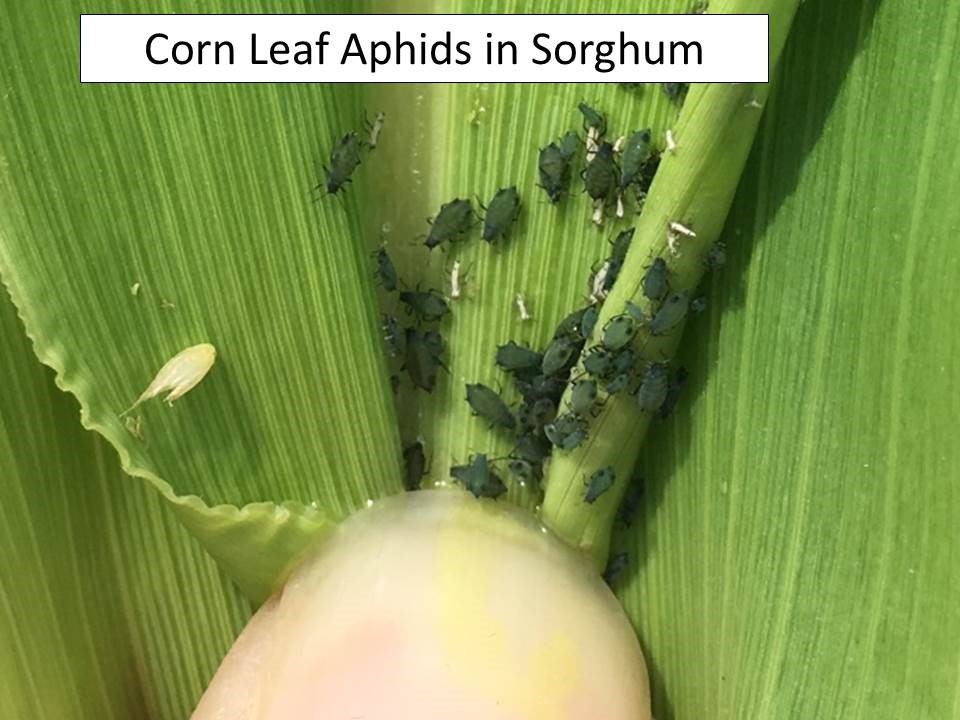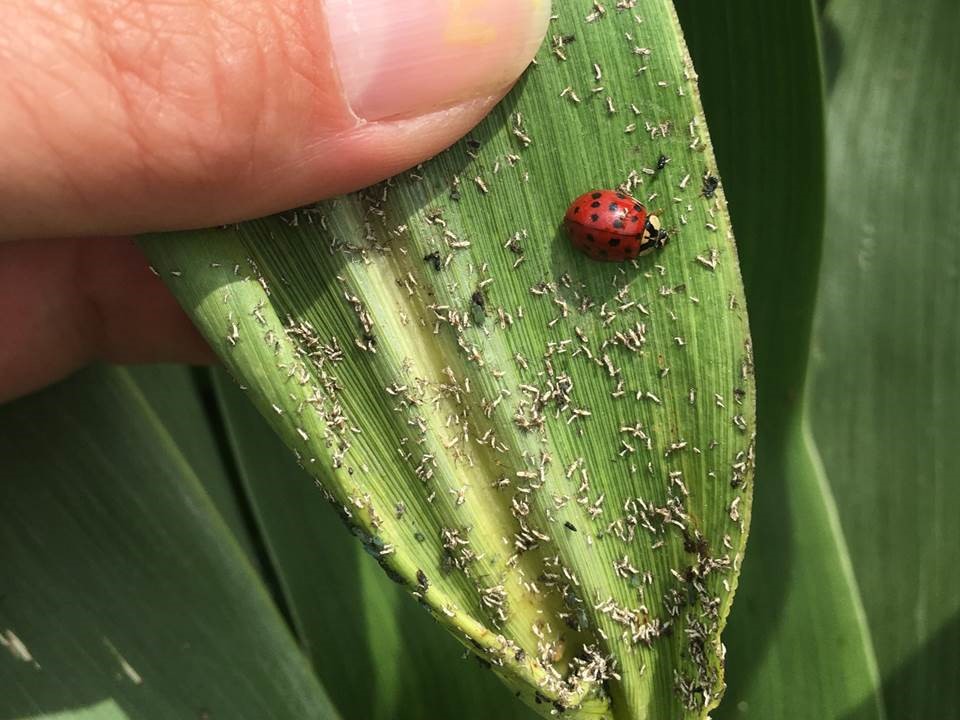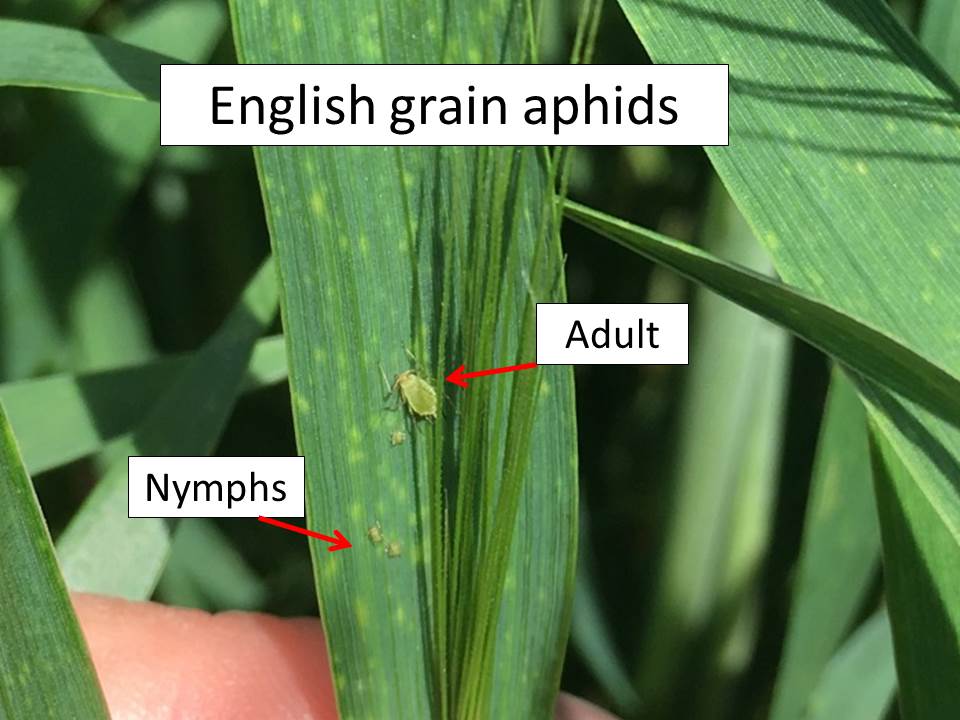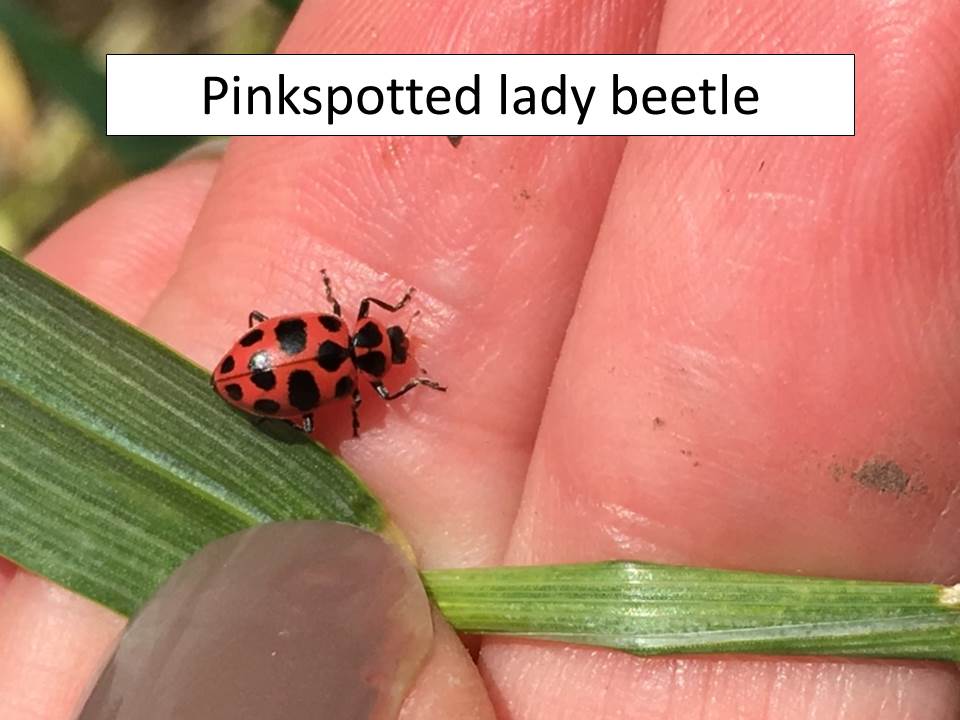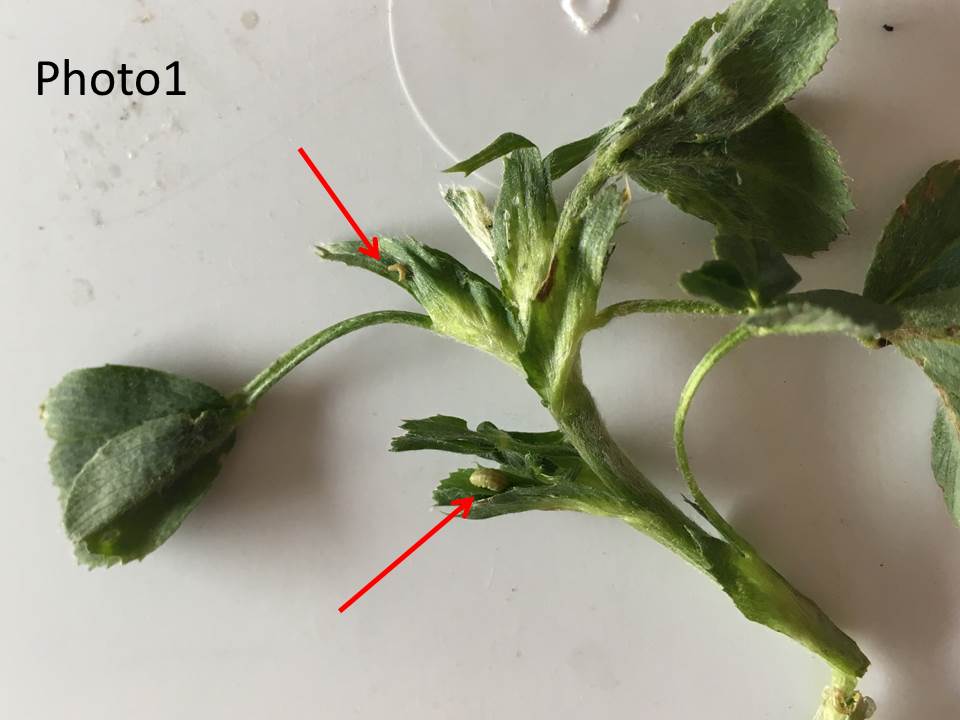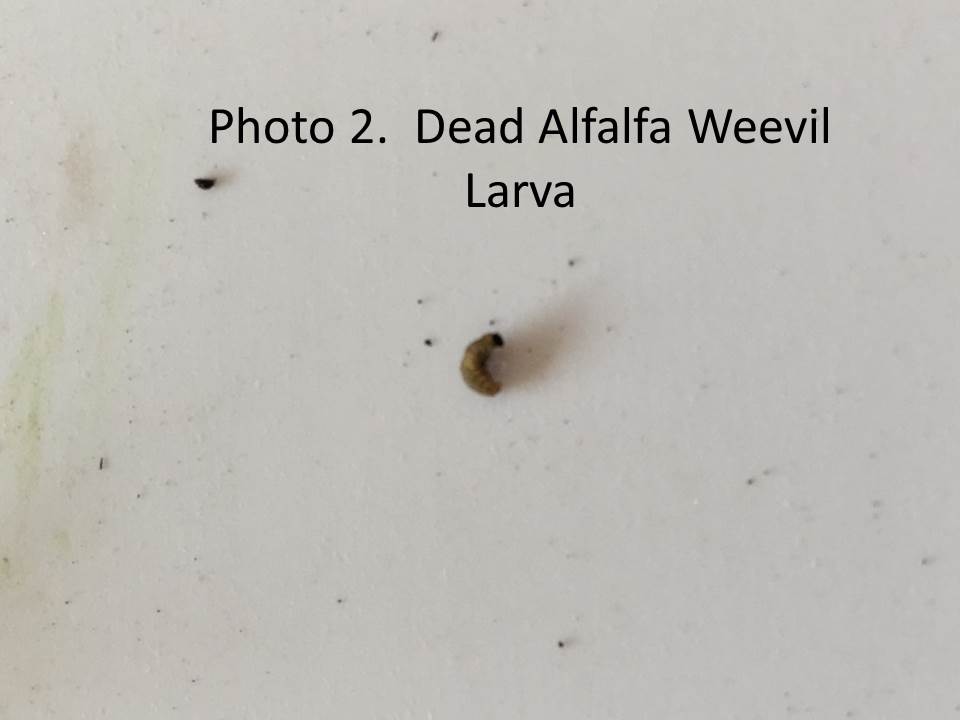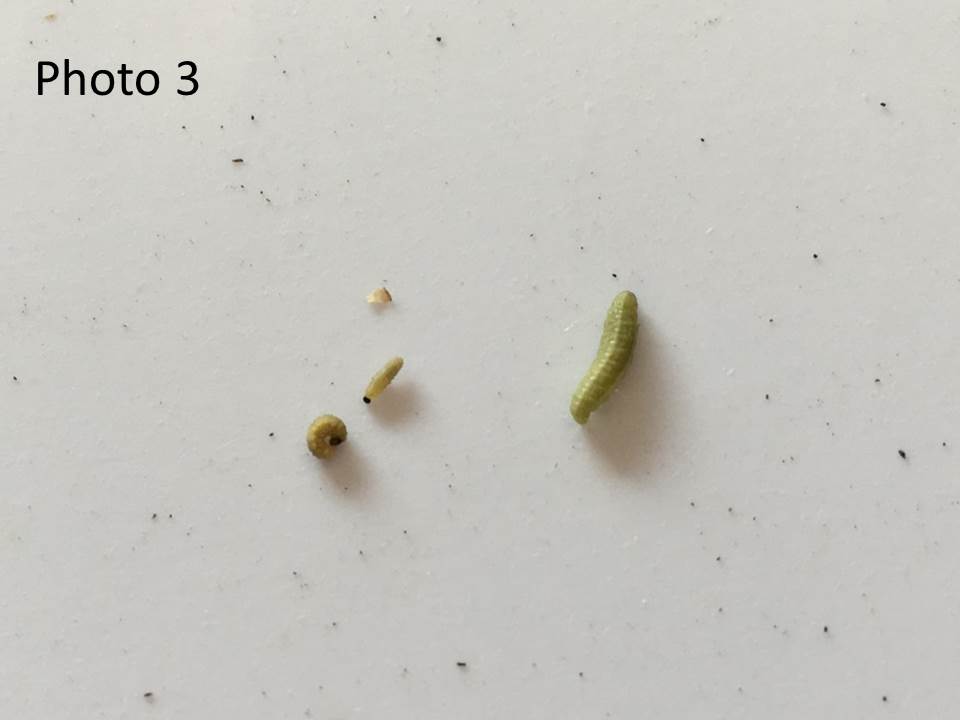–by Dr. Jeff Whitworth
Alfalfa weevil larval feeding damage seems to be almost finished (fig 1.) throughout north central Kansas, for one of the following reasons: some larvae were killed naturally a few weeks ago due to the freezing temperatures, some were killed by insecticide applications, and some have just developed to the pupal stage and thus quit feeding. There are still a few active larvae (fig. 2) however, most remaining weevils are mature larvae, but there are also a very few younger ones (i.e. note the tiny larva that just hatched, at the tip of the pencil), plus a few pupae and adults.
Figure 1. AW feeding
Figure 2 Various stages AW larvae (Cayden Wyckoff)
Aphids are still present (fig. 3), but in tremendously reduced numbers, also probably for the same reasons as the factors that decimated the weevils, but plus–there are significant numbers of lady beetle pupae (fig. 4) and adults (fig. 5). This means there were significant numbers of lady beetle larvae previously feeding on those aphids. Hopefully, these ladybeetles will survive and move to any fields wherever they can find pests to feed on during the rest of the growing season.
Figure 3. Aphid (Cayden Wyckoff)
Figure 4. Lady Beetle pupae (Cayden Wyckoff)
Figure 5. Adult Lady Beetle (Cayden Wyckoff)
Many alfalfa fields have already just been/or are currently being, swathed throughout south central and north central Kansas. This should take care of any remaining alfalfa weevil larvae. However, it may allow some stem feeding, often called “barking”, by adults especially under the windrows and may continue until temperatures warm up into the 80’s.





